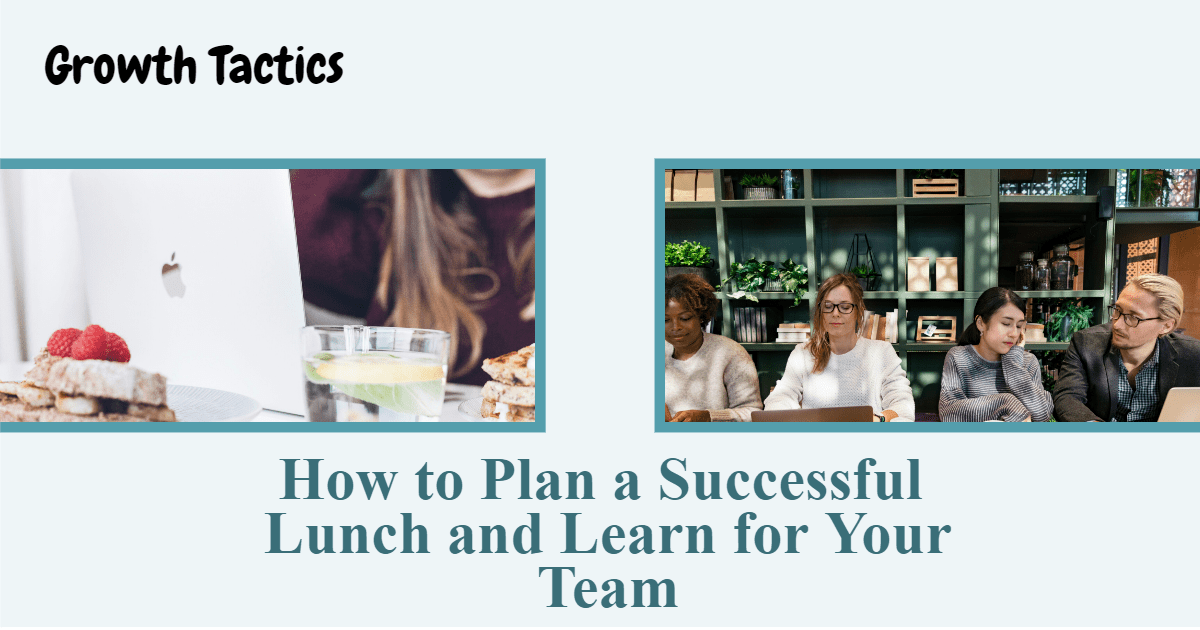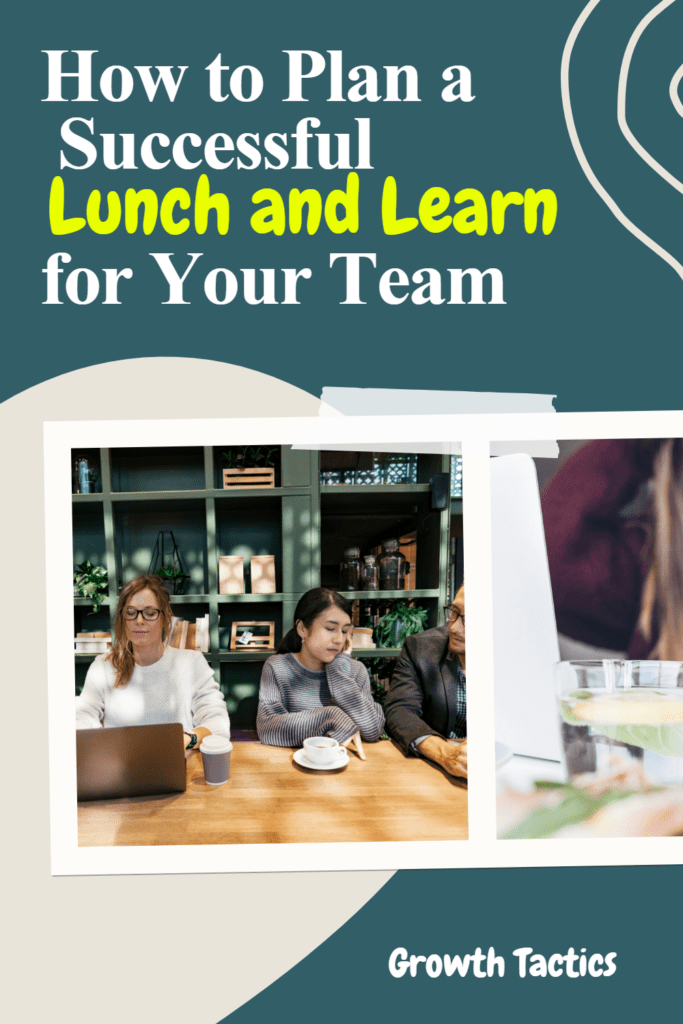Lunch and learns have become a popular way for companies to provide professional development opportunities to their employees. These events, typically held during the lunch break, offer team members a chance to learn something new while enjoying a meal together. Planning a successful lunch and learn requires careful organization and consideration of the needs and interests of the participants. In this blog post, we will provide you with a step-by-step guide on how to plan and execute a lunch and learn that will leave your team feeling engaged and inspired.
Set a Learning Objective
Before you begin planning your lunch and learn, it is important to determine what you want your attendees to learn or take away from the event. Setting a clear learning objective will help you select appropriate topics and activities that align with the goals of your team and organization. For example, if your team is looking to improve their time management skills, you could choose a topic such as “Effective Time Management Strategies” for your lunch and learn session.
Choose Relevant Topics
When selecting topics for your lunch and learn sessions, it is important to consider the interests and needs of your team members. Here are some popular lunch and learn topics that you can consider:
Leadership and Management
Emotional Intelligence in the Workplace
Conflict Resolution and Negotiation Skills
Communication and Collaboration
Active Listening Techniques
Building Stronger Relationships with Stakeholders
Virtual Collaboration Tools and Techniques
Cross-Cultural Communication in a Global Workplace
Personal Development
Time Management and Productivity Hacks
Stress Management and Work-Life Balance
Goal Setting and Personal Growth Strategies
Building Resilience and Handling Workplace Challenges
Building a Personal Brand and Networking Skills
Innovation and Creativity
Design Thinking and Problem-Solving Techniques
Fostering a Culture of Innovation
Creative Thinking and Idea Generation
Entrepreneurial Mindset and Intrapreneurship
Agile and Lean Methodologies
Industry or Job-Specific Topics
Trends and Developments in [industry]
Best Practices in [specific job role]
Compliance and Regulatory Updates
Technical Skills Development
Customer Service Excellence in [industry]
Remember to choose a mix of topics that align with your team’s goals, interests, and professional development needs. You can also rotate the topics to provide a diverse range of learning opportunities and keep the lunch and learn sessions engaging and fresh.
Find a Presenter
Next, identify a suitable presenter who has expertise in the chosen topic. The presenter can be an internal staff member, a guest speaker, or even someone from outside of your organization. The presenter should be able to deliver the information in an engaging and interactive manner, keeping the audience interested throughout the session. If you choose to invite a guest speaker, ensure they are well-prepared and have a clear understanding of the learning objective and the needs of your team.
Determine the Format and Duration
When planning your lunch and learn, it is important to consider the format and duration of the session. Here are some common formats to consider:
1. Presentation Style
This format involves a presenter delivering a PowerPoint presentation or a talk on the chosen topic. It is a straightforward and informative format that allows attendees to learn from an expert. Interactive elements such as polls or Q&A sessions can be included to engage the audience.
2. Panel Discussion
A panel discussion involves bringing together a group of experts who discuss the chosen topic and share their insights and experiences. This format provides different perspectives and encourages conversation and interaction among the panelists and the audience.
3. Workshop or Hands-on Activity
In this format, attendees actively participate in hands-on activities or workshops related to the topic. It can involve group exercises, case studies, or practical exercises that allow attendees to apply their learning to real-life scenarios.
4. Webinar or Online Presentation
Virtual lunch and learns have become increasingly popular, especially for remote teams or when in-person gatherings are not feasible. Webinars or online presentations allow for flexibility in terms of attendance and participation. Platforms like Zoom, Microsoft Teams, or Google Meet can be used to host virtual lunch and learns.
The duration of the lunch and learn session will depend on the content and activities planned. Typically, lunch and learns last between 45 minutes to an hour, allowing enough time for attendees to enjoy their meal while also engaging in the learning session. Be mindful not to make the session too long as it may impact the productivity and engagement of the participants.
Consider the preferences of your team members and the nature of the chosen topic when deciding on the format and duration. Virtual formats may be more suitable for remote teams or when in-person gatherings are not possible, while interactive formats like workshops or panel discussions can encourage active participation and engagement.
Remember to communicate the format and duration clearly to the attendees when promoting the event to ensure they understand what to expect and can plan their time accordingly.
Plan the Logistics
To ensure a smooth and successful lunch and learn, pay attention to the logistical details. Consider the day of the week and time that would be most convenient for your team members. If you have employees who work different shifts or have flexible schedules, try to find a time that accommodates everyone. You should also decide whether you will provide lunch for the participants or if they will be responsible for their own meals. Providing lunch can be a nice perk and encourage attendance, but it may not always be feasible. If you decide to provide lunch, consider any dietary restrictions or preferences that your team members may have.
Prepare Engaging Materials
To make your lunch and learn session more engaging and interactive, it is important to prepare a variety of materials. Consider incorporating the following types of materials:
1. Handouts or Worksheets
Prepare handouts or worksheets that summarize the key points or provide exercises for participants to complete during or after the session. These materials can serve as a takeaway resource for attendees to reference later.
2. Presentations
Create a visually appealing PowerPoint or Google Slides presentation to accompany the session. Use visuals, charts, and graphs to illustrate key concepts and make the content more engaging and memorable.
3. Videos or Multimedia Content
Incorporate videos or multimedia content that is relevant to the topic. This can include recorded interviews, TED Talks, or instructional videos that provide additional insights or perspectives.
4. Interactive Activities
Include interactive activities or exercises to encourage participation and reinforce learning. This can involve group discussions, case studies, role-playing scenarios, or short quizzes to test knowledge and stimulate critical thinking.
5. Digital Resource Guide
Create a digital resource guide that includes links to articles, books, online courses, or other relevant resources related to the topic. Share this guide with the attendees after the session to encourage further exploration and self-directed learning.
6. Breakout Rooms or Discussion Boards
For virtual lunch and learns, use breakout rooms or discussion boards to facilitate small group discussions or networking opportunities. These platforms allow participants to interact and share their thoughts and experiences related to the topic.
By incorporating a variety of engaging materials, you can cater to different learning styles and keep the participants actively involved throughout the session. Remember to review and test these materials in advance to ensure they are error-free and align with the learning objectives of the lunch and learn session.
Promote the Event
To ensure a good turnout for your lunch and learn, it is important to promote the event to your team members. Send out invitations or announcements well in advance, providing clear details about the topic, presenter, date, time, and any other relevant information. Use various channels to communicate the event, such as email, intranet, or messaging platforms like Slack. Highlight the benefits of attending the lunch and learn, emphasizing the opportunity for professional development, learning new skills, and networking with colleagues.
Facilitate Engagement and Interaction
During the lunch and learn session, it is important to create an interactive and engaging environment. Encourage attendees to ask questions, share ideas, and participate in discussions. Consider incorporating small group discussions or question-and-answer sessions to facilitate interaction among the participants. This will not only enhance the learning experience but also foster a sense of community and collaboration within the team.
Gather Feedback and Make Improvements to Your Lunch and Learn Program
After the lunch and learn event, gather feedback from the participants to assess its effectiveness and identify areas for improvement. You can distribute a short survey or conduct a brief follow-up discussion to gather their thoughts and opinions. Use this feedback to make necessary improvements for future lunch and learns, such as selecting different topics, adjusting the format, or incorporating new activities. Regularly evaluating and improving your lunch and learns will ensure that they continue to be a valuable and engaging learning experience for your team members.
Follow Up and Provide Continued Support
To ensure the success of your lunch and learn, follow up with the attendees after the session to provide continued support and resources. Here are some ways to provide ongoing support:
1. Share Learning Materials
Share any materials or resources discussed during the session with the attendees. This can include the presentation slides, handouts, worksheets, or the digital resource guide shared during the session. This will serve as a helpful reference for attendees who want to revisit what was covered during the session.
2. Encourage Further Exploration
Encourage attendees to further explore the topic by providing additional resources related to the topic. This can include articles, books, seminars, or online courses that can deepen their understanding and knowledge of the subject.
3. Follow up Meetings
Arrange follow-up meetings with the attendees to discuss how they have been able to apply the concepts learned during the session in their work and provide feedback on the impact it has had. Through this, you can also get insight into areas that need further improvement.
4. Create a Learning Series
Consider creating a learning series, where the lunch and learn becomes a regular professional development program within the organization. This will give the attendees an opportunity for continued learning and development on various topics with an expert’s help.
Creating a culture of learning and development in the organization will inspire innovation, creativity, and employee satisfaction. By providing ongoing support and resources, you will reinforce the value of the lunch and learn and maximize its impact on the growth and development of your team.
Conclusion
In conclusion, planning a successful lunch and learn requires careful consideration of the learning objectives, topics, presenters, logistics, and engagement strategies. By following these steps and taking into account the unique needs and interests of your team, you can create a lunch and learn event that is both informative and enjoyable for your team members. Lunch and learns offer a valuable alternative to formal training programs and seminars, providing an opportunity for continuous learning and professional development within the organization. So, start planning your next lunch and learn and watch as your team members grow and thrive through this engaging learning experience.


